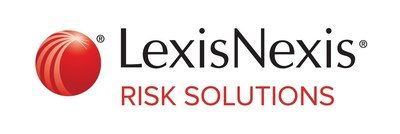LexisNexis Risk Solutions and ExamOne Combine Leading Prescription and Laboratory Testing Data with Non-medical Data Science to Improve Risk Identification for Life Insurance Underwriting
LexisNexis Risk Solutions and ExamOne have formed a strategic partnership to enhance life insurance underwriting through a next-generation mortality model. This collaboration enables insurers to swiftly process applications, combining data from LexisNexis' Risk Classifier with ExamOne's laboratory and prescription history data. By integrating these datasets, insurers can efficiently evaluate risk, reduce expenses, and expedite the issuance of policies while adhering to legal and regulatory standards. This innovation aims to meet growing consumer demands for faster application processes.
- New partnership aims to enhance life insurance underwriting processes.
- Integration of LexisNexis Risk Classifier with ExamOne's data offers a unique predictive mortality score.
- Streamlined model assists in faster application processing and improves customer experience.
- None.
Insights
Analyzing...
ATLANTA, Oct. 5, 2020 /PRNewswire/ -- LexisNexis® Risk Solutions, a leading provider of data, analytics and technology for the insurance industry, and ExamOne®, a Quest Diagnostics company and leading laboratory and prescription history data provider for life insurance, announced a strategic relationship to offer insurance carriers a next-generation life mortality model to underwrite new policies. The collaboration allows life insurers to more confidently expand age and policy ranges, utilize data in a more consistent, cost-effective manner, and deliver better experiences to consumers within minutes versus weeks using LexisNexis® Risk Classifier.
Combining the current Risk Classifier model from LexisNexis Risk Solutions – which includes public records, credit attributes and driving behavior data – with ExamOne's accelerated medical solution historical laboratory testing and prescription information creates an underwriting solution that contains data sources to form a single, predictive mortality score that is unique to the market. This combination of the data will help life insurers evaluate relevant data into one streamlined and integrated model, assisting in the carrier's overall underwriting decision process.
"Collaborating with LexisNexis Risk Solutions demonstrates our commitment to help life insurers transform their workflows as well as simplify, streamline and accelerate the completion window of application to policy issuance for a better customer experience," said Joey Grant, president of ExamOne. "We are pleased with the preliminary results illustrating how our extensive data assets, including clinical laboratory history databases and prescription history, can be used in combination with LexisNexis Risk Classifier data to help life insurers offer consumers the protection they need for their families."
"Life insurers can benefit from unprecedented lift when combining these data sets into one streamlined model," said Debra Gangelhoff, vice president and general manager, Life Insurance, LexisNexis Risk Solutions. "The industry is seeing heightened pressure to speed up the traditional application process to meet the needs of consumers who increasingly have less tolerance for long underwriting cycle times, all while maintaining a touchless process to comply with social distancing guidelines. Incorporating historical laboratory, prescription history and medical claims data into Risk Classifier provides insurers an alternative to obtaining medical information from traditional paramedical exams and laboratory testing. We are proud to help life insurers innovate and are excited about the analysis we've been delivering with ExamOne to continue challenging the status quo by creating a better process."
Working together, LexisNexis Risk Solutions and ExamOne can help life insurers gain a unique competitive advantage, reduce risk and expenses, and improve carrier workflows. This collaboration can arm life insurers with relevant data, using one streamlined and integrated mortality model. It is important to note that the combined product will meet the applicable legal and regulatory requirements around consumer authorization for the disclosure and use of consumer information.
For more information on LexisNexis Risk Classifier, please click here.
About LexisNexis Risk Solutions
LexisNexis Risk Solutions harnesses the power of data and advanced analytics to provide insights that help businesses and governmental entities reduce risk and improve decisions to benefit people around the globe. We provide data and technology solutions for a wide range of industries including insurance, financial services, healthcare and government. Headquartered in metro Atlanta, Georgia, we have offices throughout the world and are part of RELX (LSE: REL/NYSE: RELX), a global provider of information and analytics for professional and business customers across industries. For more information, please visit www.risk.lexisnexis.com and www.relx.com.
About ExamOne
ExamOne, A Quest Diagnostics Company, is a leading provider in the risk assessment industry who is committed to empowering decisions with health-based insights. Through in-depth personal history and national specimen collection capabilities, as well as access to instant health-based data, we provide quick and reliable health insights for life insurers. For more information, please visit ExamOne.com
Media Contacts:
Rocio Rivera
LexisNexis Risk Solutions
Phone: +1.678.694.2338
rocio.rivera@lexisnexisrisk.com
Mollie Holman
Brodeur Partners for LexisNexis Risk Solutions
Phone: +1.646.746.5611
mholman@brodeur.com
Kim Gorode
Quest Diagnostics
mediacontact@questdiagnostics.com
![]() View original content to download multimedia:http://www.prnewswire.com/news-releases/lexisnexis-risk-solutions-and-examone-combine-leading-prescription-and-laboratory-testing-data-with-non-medical-data-science-to-improve-risk-identification-for-life-insurance-underwriting-301145157.html
View original content to download multimedia:http://www.prnewswire.com/news-releases/lexisnexis-risk-solutions-and-examone-combine-leading-prescription-and-laboratory-testing-data-with-non-medical-data-science-to-improve-risk-identification-for-life-insurance-underwriting-301145157.html
SOURCE LexisNexis Risk Solutions








